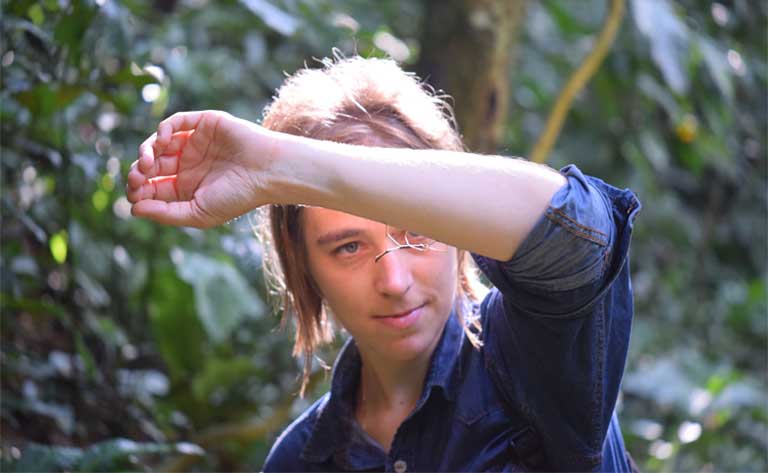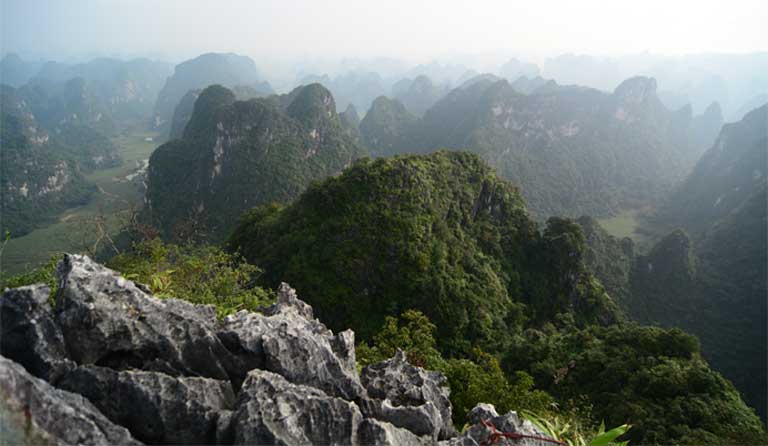- The descriptions and locations of new reptile species featured in scientific literature are frequently being used by traders to quickly hunt down, capture and sell these animals, allowing them to be monetized for handsome profits and threatening biodiversity.
- New reptile species are highly valued by collectors due to their novelty, and often appear on trade websites and at trade fairs within months after their first description in scientific journals.
- In the past 20 years, the Internet, combined with the ease and affordability of global travel, have made the problem of reptile trafficking rampant. Some taxonomists now call for restricted access to location information for the most in demand taxa such as geckos, turtles and pythons.
- Once a new species has been given CITES protection (typically a lengthy process), traders often keep the reptiles in “legal” commercial circulation by making false claims of “captive breeding” in order to launder wild-caught animals.
“What happens when a new species of gecko is discovered? Two Germans grab their suitcases and get on a plane,” says Sandra Altherr, telling an in-house joke. Altherr is a co-founder of Pro Wildlife, a conservation NGO in Germany.
In the joke, the anonymous men with suitcases are reptile traders. Their objective is to get hold of the new species as quickly as possible and sell it to collectors. A single lizard, turtle or snake can fetch hundreds, even thousands of dollars.
How do the traders know where to go? And why are Germans the butt of the joke?
“Traders follow scientific literature, scanning it systematically, looking for new species,” says Altherr. A long-standing scientific convention helps their search: journals not only require a description of each new species found, but typically include the location where it was discovered.
In addition, few know that Germany is a superpower in the reptile trade. “We have had the tradition of reptile keeping since the start of the nineteenth century,” explains Altherr. “The problem became huge over the last 2 or 3 decades. With technology and globalization, nature became available and accessible, and the Internet helps traders to get organized, to get in touch.”

The world’s largest reptile fair, known as Terraristika, is held four times a year in the German city of Hamm. Altherr says that you can find “everything” on sale there. Terraristika is also where collectors come to pick up the reptiles they ordered online.
Alice Hughes, a research professor at Xishuangbanna Tropical Botanical Garden, the Chinese Academy of Sciences, co-authored a recent study analyzing the online reptile trade. “We scraped the Internet for all the major reptile selling sites,” she says. “The results were staggering; 36% of all reptile species, [nearly] 4,000, were in trade. That included a lot of newly described species. There was clearly a drive for novelty — 137 species of reptiles that have been described since the 2000s were in trade.”
The data collected by Hughes and her team showed how quickly traders responded to scientists’ work. Newly described species appeared in catalogues within months of their first mention in scientific publications.

For example, the Takou marbled gecko (Gekko takouensis), from central Vietnam was discovered in 2010; it became available to collectors the same year. The Persian striped skink (Eumeces persicus), discovered in 2017 in Iran, was on sale within three months. And it took collectors just a few months to locate, capture and put up for sale several new species of Uroplatus Madagascar leaf geckos.
A lot of gecko species are in trade because of their beautiful coloration and morphology, explains taxonomist Yang Jianhuan, Senior Conservation Officer at Kadoorie Farm and Botanic Gardens in Hong Kong.
Yang described four new species of Goniurosaurus karst geckos in the literature, animals that inhabit limestone caves in South China, Southeast Asia and Japan. A species he first described in 2013 quickly appeared in online trade.
“How did it make me feel? Of course, I was very upset! It felt terrible seeing them on sale,” recalls Yang.
As a result, he decided not to publish location data when he described another Goniurosaurus species in 2015. “I knew: if I publish the exact location again, people will go look for it. I don’t want traders to use my information.” The paper where the species was described, published in the journal Zootaxa, mentions the location only as: “available on request, for fellow scientists.”
When mentioning a location, Yang says, even listing the name of a village is risky, let alone publishing precise coordinates: “Geckos’ habitat is karst caves. You just go to that village and ask, ‘where is a cave around here?’”

Altherr explains that traders don’t necessarily go to find the caves themselves: “They use couriers, sometimes Germans, sometimes students from those countries who study in Germany. Couriers then go to local people, and say, ‘These are the animals we want to find.’”
Netherlands-based herpetologist Jordi Janssen, program officer at the Monitor Conservation Society, says that rediscovered species are also highly prized. “Last year there was a paper on a lizard from Sumatra which has not been seen for 170 years; they published a location. On social media, I then saw a post by a convicted reptile smuggler that he went to Sumatra multiple times to find this animal. I am sure this species will be in trade as soon as [Covid-19] travel restrictions are gone.”
“Once a species is in trade, it is very, very difficult to do anything about it,” says Janssen. “[Traffickers] set up a legal stream, laundering everything [wild-caught] by claiming captive breeding.”
Yang shows a photo taken by a trader of his stock — a pile of plastic boxes, a gecko in each one: “Captive breeding? Bullshit,” says the researcher.
He explains why: “I keep a gecko for a year and it lays what, two, three eggs? Geckos are easy to catch. You see ten geckos on a rock, nine are yours, just get a headlamp, and grab, grab, grab. In one evening, I can get more than I can breed in a year.”

Yang’s decision not to publish the exact location of his latest cave gecko species discovery was controversial. While some of his colleagues supported the researcher, there were also opposing voices who said that Yang broke one of the most important premises of science: transparency, and went against the taxonomic tradition of publishing location data.
“The colleagues of the older generation said I must publish. They say the tradition cannot be broken. I really understand both sides, but some scientists just have not yet realized that this problem is now very big,” Yang says.
He suggests a compromise: “For reptiles with high commercial value — turtles, cave geckos, pythons — only researchers and government agencies should be authorized to access the exact location data.”

The moment that a location is revealed, a newly discovered species is exposed and virtually defenseless, say experts. The wheels of the CITES bureaucracy turn slowly, and by the time the species is listed (if it ever becomes listed) and awarded protection by the Convention on International Trade in Endangered Species of Wild Fauna and Flora, the “Germans with suitcases” will have already put it into commercial circulation, laundering the newly caught animals utilizing captive breeding claims as legal cover.
Why is the trade so lucrative? Collectors crave rarity. “Range-restricted, rare species are disproportionally overrepresented in reptile trade,” explains Hughes. This makes newly described species especially vulnerable: “Many have really tiny ranges, such as a single limestone hill. Their entire populations can be quickly collected out for trade.”
Yang warns against the dangers to biodiversity of piecemeal harvesting of newly described species: “We don’t know their role in the ecosystem — where they live [range size], what their prey is and what eats them. We don’t know how important they are. Their removal may not have an immediate effect, but long-term effects? We don’t know.”

Altherr lambasts traders for their “self-serving mentality, taking from nature anything that fits into your reptile tank,” but Janssen notes that many collectors and traders see themselves as conservationists who preserve species by setting up captive populations.
So far, the traffic has been one way, with species disappearing from the wild into collectors’ tanks. Hughes says that populations of 21 reptile species are thought to have been completely collected out. No trader has come forward to reintroduce into the wild any of the species they collected for profit.
So motivated are traffickers, say conservationists, that not even a rare tree snake living in a tropical forest canopy is safe.
When Matilda’s horned viper (Atheris matildae), an arboreal snake from southern Tanzania, was described in 2011, it made the news and its images were published in mainstream media. The location was deliberately concealed to protect it from collectors.
Despite the secrecy, the critically endangered viper was tracked down within months and put on sale in Europe by German traders. Price: 500 euros — 606 dollars.
Banner image: A Libo leopard gecko (Goniurosaurus liboensis). After this species of cave gecko was first described in 2013, it quickly appeared online for sale. Image by Yang Jianhuan.
FEEDBACK: Use this form to send a message to the author of this post. If you want to post a public comment, you can do that at the bottom of the page.
